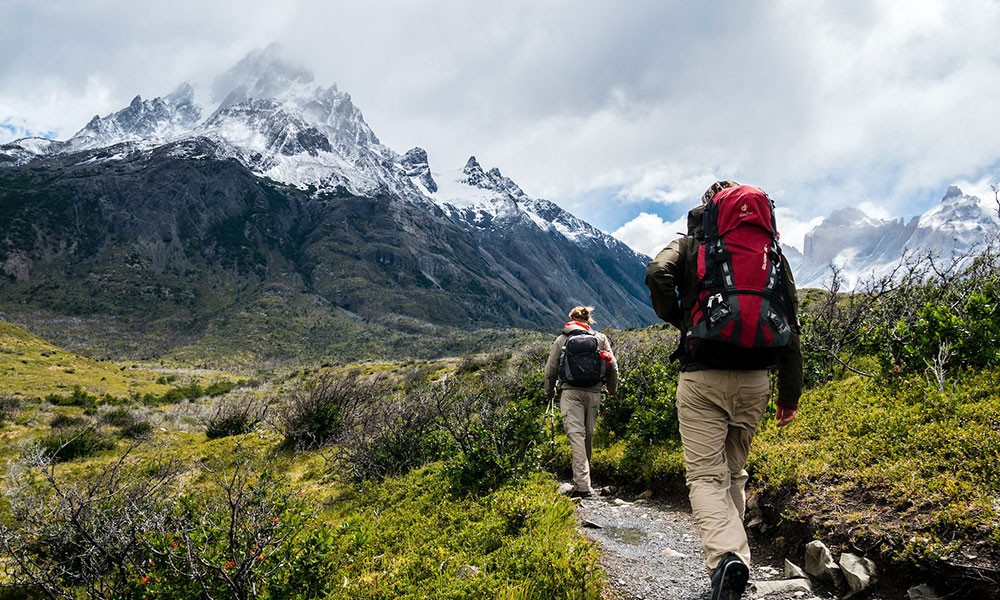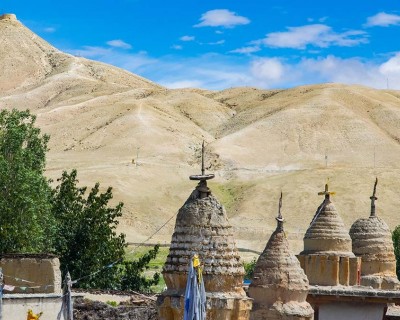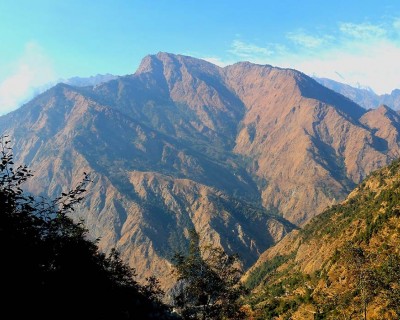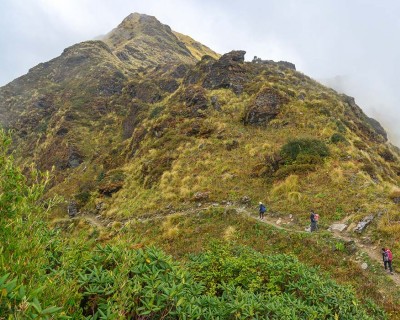Seasonal Temperature Overview
Spring (March-May)
Spring (March, April and May) is one of the most popular seasons for Everest Base Camp Trek. The climate factors are stable during this period and temperatures are comfortable throughout the trekking route. However, as this season starts just right after the winter season, during the initial phase of the season (i.e., early March), temperatures can be a little chilly at higher altitudes. At the alpine zones, there are also remnants of the winter snow that is slowly melting and nourishing the spring landscape.
The general temperature during Everest Base Camp Trek in this season is around 5°C to 20°C on average. This is a daytime temperature comparison; as for the night temperature, it can drop from -5°C to -12°C, depending on the region. In overall, the weather is comfortable and warmer during the days. As for the night and early morning, you will have to be careful about the drop to minus degrees.
Here is a summary of the temperatures of EBC Trek during different months of the spring season:
Month | Daytime Temperature | Nighttime Temperature |
March | 5°C to 10°C | -3°C to -12°C |
April | 5°C to 15°C | -10°C |
May | 15°C to 20°C | 0°C to -5°C |
You May Like:Everest Base Camp Trek in Spring
Summer/Monsoon (June-August)
The summer/monsoon is the off trekking time in Nepal. Due to the unfavorable climatic conditions, trekking activities in the Himalayas are low during this season. This is the warmest period in the country and the temperature during Everest Base Camp Trek during this season is at its highest point. You can expect the standard temperature margin to be around 12°C to 25°C during the monsoon season. The daytime temperatures in the Himalayas are warm and the nighttime temperatures are also not that chilly. Even in the higher regions, the nighttime temperature normally averages around 0°C to -5°C.
Although the overall terrain can be challenging during this point of the year, the temperatures are on the warmer side. But you have to prepare yourself for high humidity and frequent rainfall. The atmosphere after the rainfall are usually fresh and cool. With proper planning and careful navigation, trekking is possible during this season. However, you need to be mindful of the weather uncertainty and stay updated with regular weather updates.
Here is what the temperature during Everest Base Camp Trek are like while exploring this mainstream route in monsoon season.
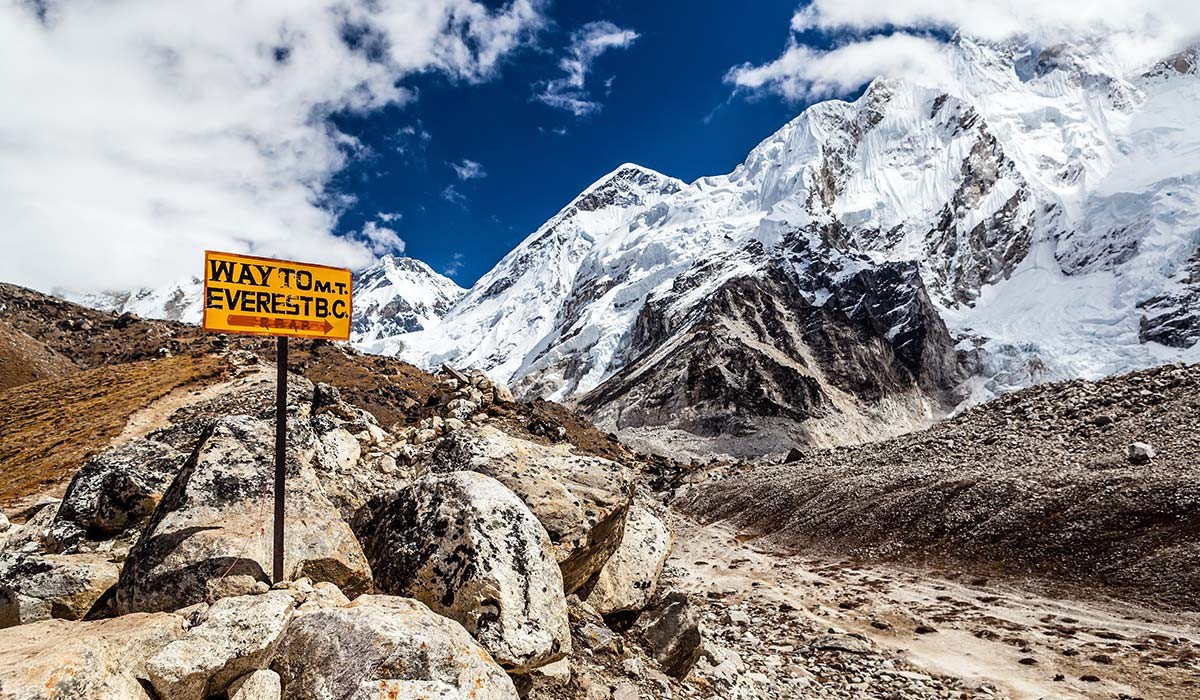
Month | Daytime Temperature | Nighttime Temperature |
June | 15°C to 25°C | 0°C to 5°C |
July | 12°C to 20°C | 2°C to 5°C |
August | 12°C to 20°C | 0°C to -5°C |
Autumn (September-November)
Autumn is another incredibly popular trekking season in Nepal after spring. This season is mostly renowned for its comfortable trekking experience and the perfect weather. The temperatures in this season are neither too cold nor too hot. The morning and evening have a crisp and fresh atmosphere. As for the day temperatures, they are ideal for outdoor exploration. The temperatures of the Everest region average about 8°C to 20°C during the daytime. Similarly, during the night and early mornings, the temperature can drop from 0°C to -10°C.
This peak trekking season overall has clear skies, fresh mountain views and cooler nights. During the early part of the season (i.e., early September), if the monsoon lingers for longer, there can be light rainfall and a slight rise in temperatures. However, the rainfall is usually light and normally occurs in the evening. The temperatures also start to get comfortable as you ascend to the higher regions.
For a proper understanding of the temperature during Everest Base Camp Trek in the autumn season, you can check the chart below.
Month | Daytime Temperature | Nighttime Temperature |
Septemeber | 8°C to 20°C | 0°C |
October | 5°C to 15°C | -5°C |
November | 5°C to 12°C | -10°C |
Winter (December-February)
Winter is another popular off-season for Himalayan exploration in Nepal. The temperatures of the region drop to their freezing points in the region during this season. During the winter season, the thick snowfall covers the higher regions completely. Most parts of the trail stretching from the alpine region and above are also covered during this season. Both daytime and nighttime temperatures drop to their freezing points of the year during this season. The daytime temperatures in the region are normally between 5°C to 12°C.
Similarly, the nighttime temperatures of the Everest region can drop from -10°C to -25°C during this period. The temperature in the city areas and lower trekking region is not that cold during winter. As only high-altitude points of the county receive snowfall, the temperatures at the lower regions are comfortable. But, at the higher part of the trekking route, the temperatures start to drop gradually and reach freezing points at night.
Here is the structured outlay of the temperature during Everest Base Camp Trek in the winter season.
Month | Daytime Temperature | Nighttime Temperature |
December | 5°C to 12°C | -10°C to -20°C |
January | 6°C to 8°C | -15°C to -25°C |
February | 6°C to 10°C | -15°C to -25°C |
Altitude and Temperature Correlation
Regardless of which season you are doing Everest Base Camp Trek in, it is important to understand what climate variation is. There are typically six climatic zones in Nepal that you will traverse across during your exploration of the Himalayas:
Climatic Zones in Nepal
- Tropical Zone— below 1,000 meters
- Subtropical Zone— 1,000 meters to 2,000 meters
- Temperate Zone— 2,000 meters to 3,000 meters
- Subalpine Zone— 3,000 meters to 4,000 meters
- Alpine Zone— 4,000 meters to 5,000 meters
- Tundra/Tans-Himalayan Zone— 5,000 meters and above
So, what you need to understand is that the temperatures are comfortable and warmer at the lower part of the trail. Even if it's during the peak point of the summer season, the climate is humid; it is not the same across all the climatic zones. The same goes for the winter cold; only at the higher climatic zones are the temperatures at the freezing point. So, you can expect the temperature to be comfortable and pleasant upto subalpine zones during the peak trekking seasons like spring and autumn.
As you start climbing across the alpine and tundra zones, the temperatures start to drop gradually. So, even if you are planning your EBC Trek during the peak trekking period, you need to prepare for the gradual temperature drop as you follow the trail to the higher parts of the region. In the monsoon and other comparatively warmer seasons (spring and autumn) the temperatures are on the pleasant side. However, during the winter, they can drop to freezing levels even during the daytime in these zones.
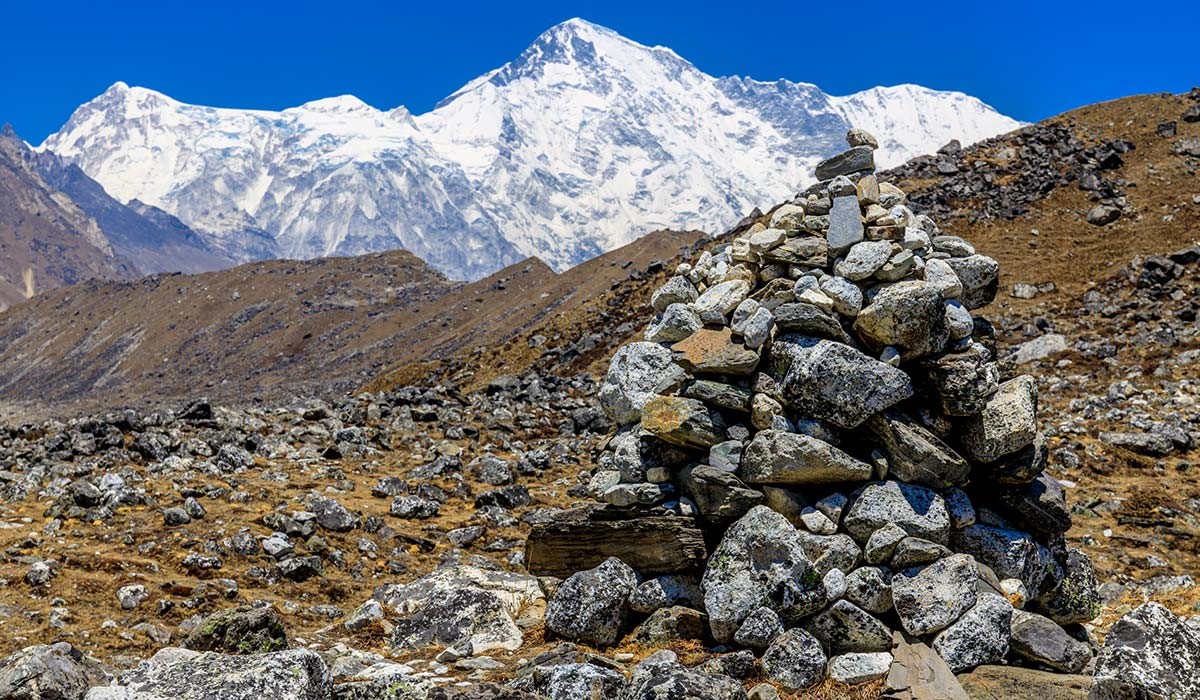
You May Like:How Do I Prepare For Altitude Sickness On The Everest Base Camp Trek?
Day and Night Temperature Differences
One of the biggest challenges of the temperature during Everest Base Camp Trek is understanding and managing the temperature differences between day and night. Exploring the Himalayan route during the day is warmer especially in the sun. However as the sun sets the temperature starts to plummet. Even during the off-trekking seasons, the daytime temperature at the alpine zone and tundra zone is on a moderate scale. But the night and early morning temperatures can drop to freezing points.
For instance, the temperature at Namche Bazaar (3,440m) in the daytime is around 15°C. But at night it can drop from 0°C to -5°C depending on the weather conditions of the season. Similarly at the Gorakshep (5,180m) in the tundra zone, the daytime temperature may be around 5°C. But as the night closes in, it can plummet upto -20°C. So you can expect the daytime temperature during Everest Base Camp Trek to be warm and comfortable. However you need to prepare for the colder nights even if you are exploring this iconic trek in favorable periods.
Temperature Table by Key Stops on the EBC Trek
If you are planning Everest Base Camp Trek, you might be curious about what the climate is like across the trekking route. We have already discussed what the temperatures are like in general at different altitudes in the Altitude and Temperature Correlation segment. However, if you are still curious about what the temperature is like at the major landmarks in this mainstream route. Here is a detailed overview of the temperatures module at the popular stops along the route.
Location | Daytime Temperature | Nighttime Temperature |
Lukla (2,800m/ 9,186ft) | 10°C to 20°C | 0°C to 5°C |
Namche Bazaar (3,440m/ 11,286ft) | 8°C to 15°C | 0°C to -5°C |
Tengboche (3,874m/ 12,709ft) | 5°C to 12°C | -2°C to -7°C |
Dingboche (4,400m/ 14,435ft) | 4°C to 10°C | -5°C to -10°C |
Lobuche (4,940m/ 16,207ft) | 0°C to 5°C | -5°C to -15°C |
Everest Base Camp (5,364m,/ 17,598ft) | 5°C to -2°C | -5°C to 15°C |
Kalapatthar (5,644m/ 18,517ft) | 5°C to -10°C | -5°C to -20°C |
This is a general temperature estimation at these major highlights across different points in the year. From the above table, you can understand that as you follow the ascending path across the elevated points, the temperatures start to drop. Similarly, there is also a striking difference between the day temperatures and night temperatures. Even if the days are normally warmer, during the night, the temperature can drop significantly on the mountain. The major fluctuation in the temperature can take place during the off-trek season when the high-altitude climate can change suddenly without any warning.
Impact of Temperature on Trekking Experience
Challenges Posed by Cold Temperatures
Compared to the warmer seasons, trekking under cold climatic conditions does pose extra challenges and risks. During the winter season (December, January and February), the higher parts of the trail are covered in the snow. This isn’t just physically more demanding but the freezing temperatures of the snow also pose the risk of frostbite and hypothermia. Similarly, during the winter, the teahouses in the higher regions are closed, which makes accommodation challenging.
The cold climate also freezes the water-supplying pipes, so meeting the daily hydration quota can be difficult. Furthermore, the icy and slippery trails need extra precaution and have high risks of accidents. The acclimatization process is also more challenging under cold climatic conditions. Keeping yourself warm, which is also a crucial step to avoid altitude sickness, can be difficult under extreme freezing temperatures, especially at higher altitudes.
Challenges Posed by Warm Temperatures
The warm temperatures during the trek can be comfortable at the higher part of the trail. But, they also do pose several risks that the trekkers need to be careful about. Due to the heat, the trekkers will lose significant body water levels. So, not drinking enough fluid to maintain the balance it can lead to dehydration. Similarly, prolonged exposure to the heat also increases the chances of fatigue and exhaustion.
Other than that, if you are trekking in monsoon, you will also need to overcome the challenging slippery trails and consistent rainfall. Warmer temperatures also mean the infestation of bugs, mosquitoes and leeches in the lower regions.
Tips for Managing Temperature Challenges
Both cold and warm temperature during Everest Base Camp Trek come with their own set of challenges. However, the different seasons also shed different light on the Himalayan beauty. So, if you are careful, you will be able to admire the unique perspective of each season and under different temperatures without any issues.
Clothing
It is important to dress in layers to adapt to the changing temperatures in different climatic zones. Regardless of the season of your preference, you need to consider the layering system to efficiently deal with the carrying temperatures enroute. Start your dressing with a comfortable moisture-wicking base layer, then add a warm insulated layer and finish with a buff waterproof/winterproof outer jacket. You also need to prepare yourself for unexpected weather conditions and carry an extra pair of dry clothes just in case.
Similarly, use helpful accessories like a neck scarf, gaiter and sunhats to protect your head and neck from the freezing wind and high altitude sun exposure. Likewise, UV protection sunglasses can deflect the harmful UV rays of the sun and save your eyes from snowblindness.
Gear
To make sure your journey remains a comfortable experience, you will also need to bring the essential gear for this mountain journey. To traverse across the higher part of the trail, you need to bring a comfortable sleeping bag ideal for sub-zero temperatures. Similarly, the trekking poles also help to walk on rugged mountain terrain without stressing joints. Other helpful gear like water bottles, thermos flasks, headlamps, comfortable trekking boots, powerbank, portable heater, etc make the journey more convenient.
Don’t Miss:Everest Base Camp Trek Packing List
Health Precautions
For the long mountain journey, it is also essential to strictly follow health precautions for different temperatures. Under the freezing climatic conditions, you need to be watchful about the frostbite. So, make sure to protect your fingers, toes and ears using gloves, mittens and thermal socks. The UV rays at higher altitudes can also be dangerous. That’s why it is important to bring SPF sunscreen to protect the exposed area from harmful UV rays.
Similarly, it is important to pay proper attention to your body language and not neglect any symptoms of general illness or altitude sickness. Staying hydrated and following proper nutrition is the best way to avoid health-related hazards on the trail. Likewise, take good care of your personal hygiene and sanitization to avoid getting sick during the Himalayan journey.
General Tips for Managing Temperature Challenges
- Acclimatize gradually, taking time to adjust to the varying altitude and weather conditions
- Stay updated with the weather conditions to avoid taking kind of unnecessary risks
- Make sure to stay dry to avoid cold-related issues like trench foot or frostbite
- Stay connected with the team and carry a radio, whistle, or emergency beams in case of separation under a less visible atmosphere
- Check your gear frequently, especially when traversing under the extreme temperatures
- Learn about signs related to the weather-related illness and Acute Mountain Sickness (AMS)
- Maintain mental resilience so that the cold and hot climatic conditions cannot impact your morale
- Pack the essential gear to deal with the temperature changes, but don’t overload yourself, which can slow you down and increase fatigue
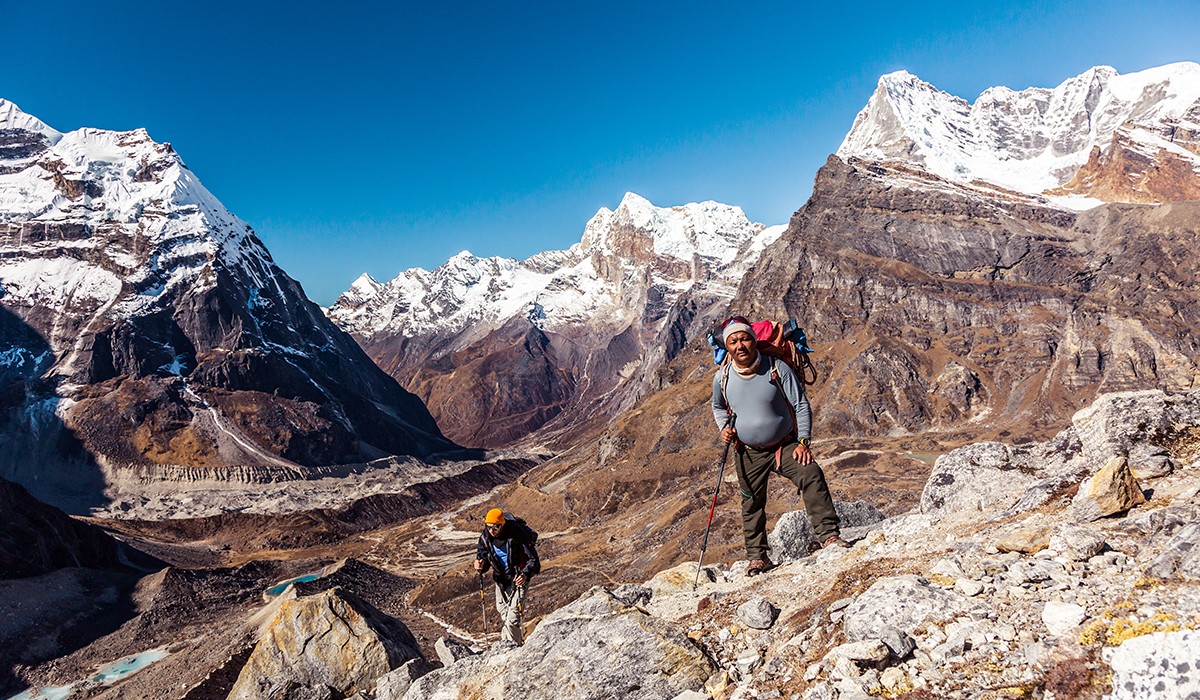
Best Time to Trek Based on Temperature Preferences
After learning all the major aspects of the temperature during Everest Base Camp Trek, you might already be clear on the best time for this remarkable Himalayan journey. If you have a comfortable experience without having to take on an extra set of challenges, spring (March to May) and autumn (September to November) are the best choices. Spring has moderate temperatures and the lush blooms create a vibrant landscape. Similarly the autumn season is accompanied by comfortable weather, offers clear crisp views of the mountain and a comfortable trekking route. Trekking in winter (December to February) and monsoon (June to August) is also possible.
But, during these points, the temperatures are at the extreme points, either too or too cold. Winter trek does reward the adventurers with quieter trails and the serene beauty of the winter landscape. However, the temperatures are extremely cold in this season making it essential to carry heavy layers and gear. Similarly, during monsoon season, consistent rainfall and high humidity can be challenging aspects of the journey. Thus, the autumn and spring seasons have the most ideal temperatures for you to enjoy a comfortable and memorable journey.
